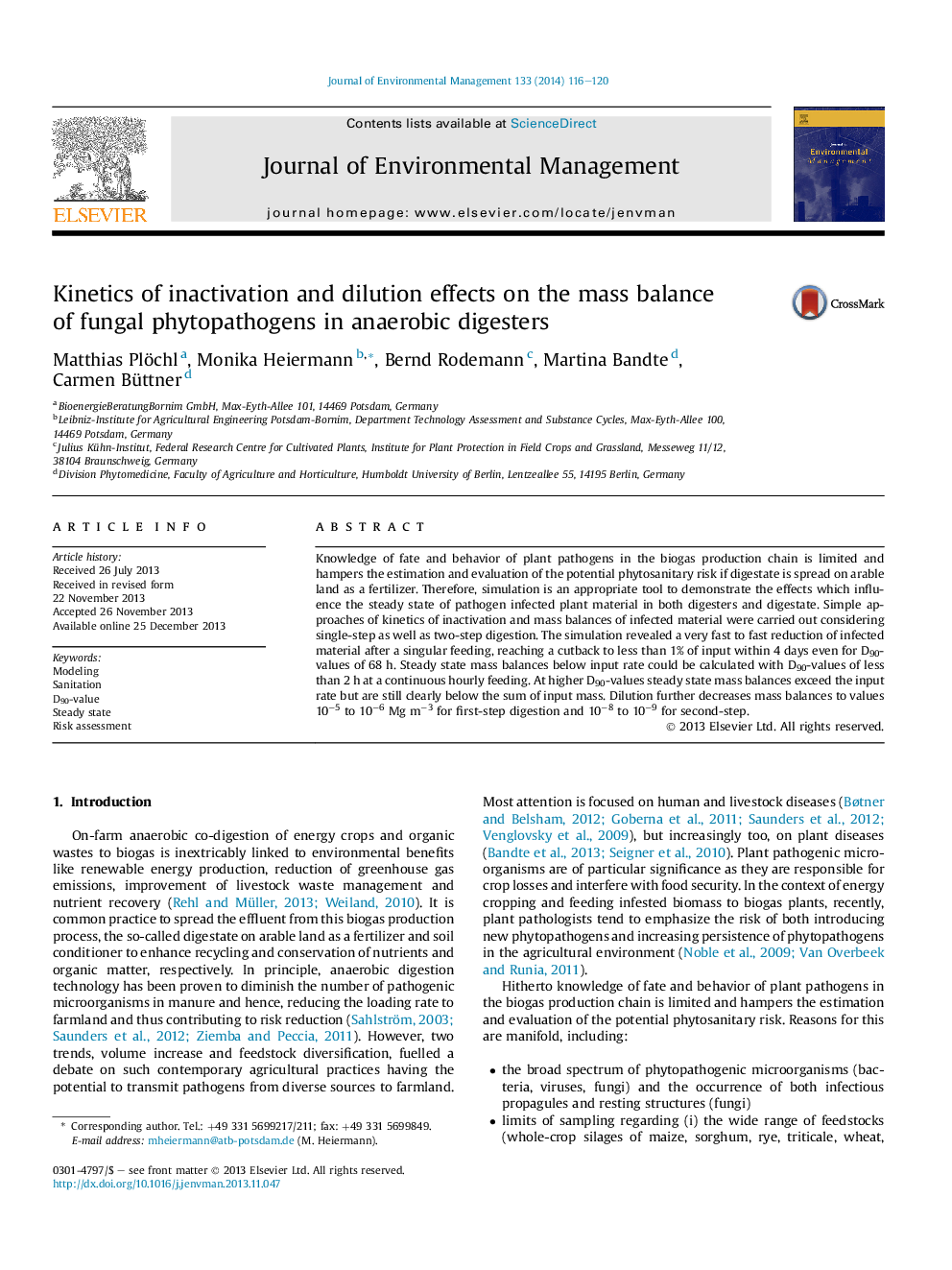| Article ID | Journal | Published Year | Pages | File Type |
|---|---|---|---|---|
| 1055831 | Journal of Environmental Management | 2014 | 5 Pages |
•Kinetics of experimental inactivation of phytopathogens were simulated.•Modeling includes single-step and two-step digestion, singular and hourly feeding.•Sanitation of phytopathogens is effective with D90-values from 8 min to 96 h.•Ensiled feedstock reveals shorter D90-values than fresh material.•Anaerobic digestion reduces the risk of spreading phytopathogens with digestate.
Knowledge of fate and behavior of plant pathogens in the biogas production chain is limited and hampers the estimation and evaluation of the potential phytosanitary risk if digestate is spread on arable land as a fertilizer. Therefore, simulation is an appropriate tool to demonstrate the effects which influence the steady state of pathogen infected plant material in both digesters and digestate. Simple approaches of kinetics of inactivation and mass balances of infected material were carried out considering single-step as well as two-step digestion. The simulation revealed a very fast to fast reduction of infected material after a singular feeding, reaching a cutback to less than 1% of input within 4 days even for D90-values of 68 h. Steady state mass balances below input rate could be calculated with D90-values of less than 2 h at a continuous hourly feeding. At higher D90-values steady state mass balances exceed the input rate but are still clearly below the sum of input mass. Dilution further decreases mass balances to values 10−5 to 10−6 Mg m−3 for first-step digestion and 10−8 to 10−9 for second-step.
